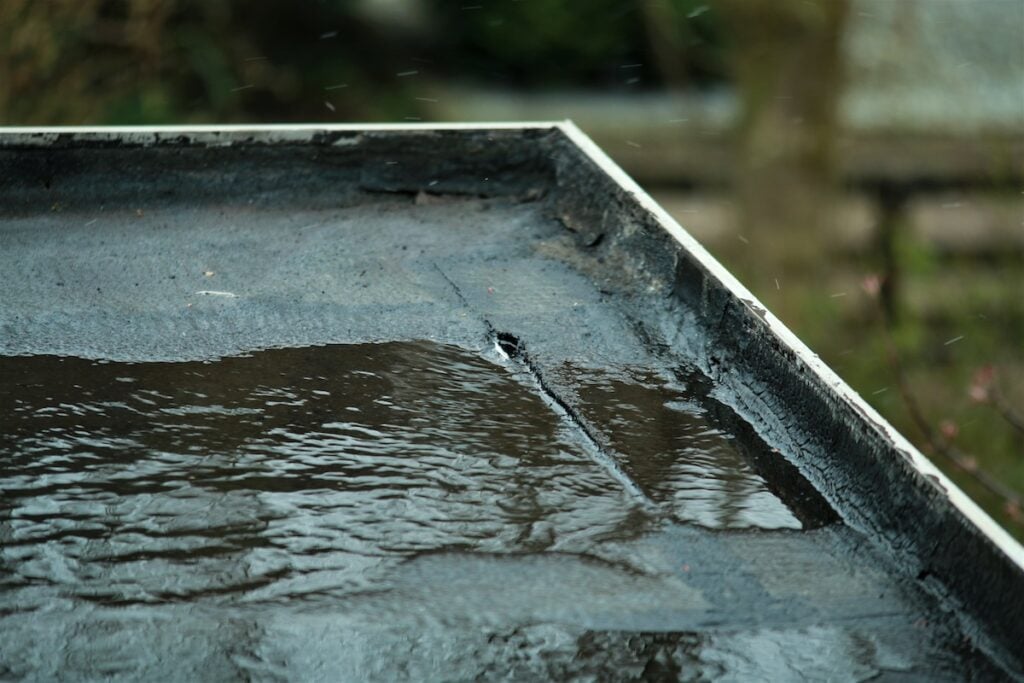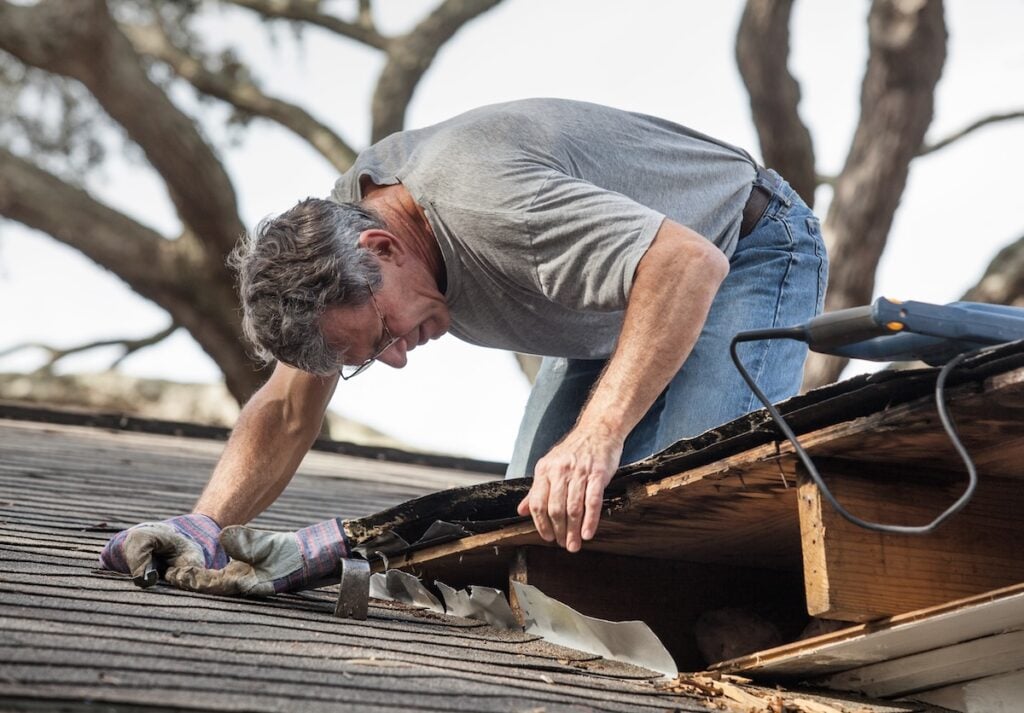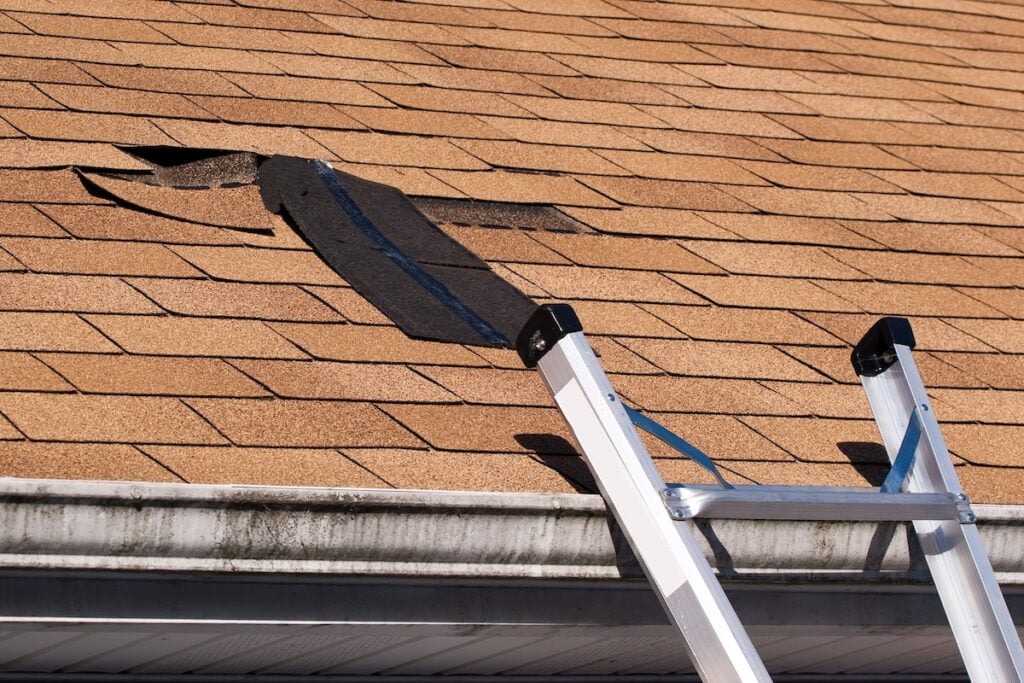Knowing how to find a roof leak is essential for homeowners who want to avoid costly damage. A leaky roof can lead to water damage, structural issues, and mold growth if not addressed promptly. Finding the root cause may seem daunting, but with the right tools, techniques, and knowledge, you can identify the problem quickly and take action.
This guide will walk you through the following:
- Common places where roof leaks occur and why
- Tools you’ll need to locate a roof leak
- Step-by-step instructions to pinpoint and address the issue
If your roof is leaking, it’s crucial to act fast. Below, we’ll discuss everything you need to know to protect your home and prevent further damage.
🏠 Common Places Where Roof Leaks Happen
Roof leaks don’t happen randomly. They usually occur in specific areas due to wear, weather, or poor construction. Here are some of the most common problem areas to inspect if you suspect a leak.
1. Roof Valleys
Roof valleys, where two roof slopes meet, are particularly vulnerable to leaks. Rainwater naturally flows through these areas, and over time, improper sealing or aging materials can lead to water seepage.
2. Around Chimneys and Vents
The areas around chimneys, vents, and other protrusions in your roof are common leak points. Flashing, which seals these structures, can become rusty, loose, or improperly installed, allowing water to sneak through.
3. Skylights
While skylights add natural light and aesthetic appeal, they are notorious for leaking when improperly installed or when their seals wear out. Look for water stains or drips forming around the skylight edges.
4. Missing or Damaged Shingles
Missing or damaged shingles are a major culprit behind roof leaks. Wind, hail, or age can cause shingles to crack, curl, or fall off, leaving your roof decking exposed to the elements.
5. Gutters and Downspouts
Clogged or improperly sloped gutters can cause water to pool on the roof. This pooling can lead to leaks or cause water to seep into the roof decking.
6. Around Roof Decking and Insulation
Sometimes, leaks occur due to problems beneath the surface. Damaged roof decking and wet insulation can point to moisture issues that may not be immediately visible from outside.
By focusing on these areas, you’re more likely to locate the source of your roof leak quickly.

🛠️ Tools You Need to Find a Roof Leak
Having the right tools makes finding and diagnosing a roof leak much easier. Here’s a list of essentials to have on hand before you begin:
- Flashlight – Essential for inspecting dark areas like attics or crawl spaces.
- Garden Hose – A helpful tool for simulating rain to identify where water is entering.
- Binoculars – For inspecting roof damage without climbing onto your roof.
- Ladder – Necessary for safe access to hard-to-reach spots.
- Protective Gloves and Shoes – Ensure a safe grip and protection while inspecting the roof.
- Sealant or Roofing Tape – Useful for small, temporary fixes once you’ve identified the problem.
These tools will prepare you to safely and efficiently locate the source of the issue.
🔍 How to Find a Roof Leak Step-by-Step
Finding a roof leak requires observation and methodical testing. Follow these key steps to pinpoint the problem:
Step 1. Start Inside Your Home
Begin by inspecting the ceilings and walls for water stains, bubbling paint, or discoloration. Water often travels along beams or insulation, so the leak’s entry point may not align directly with visible damage inside your home.
Step 2. Check the Attic
If you have attic access, this is often the best place to locate a leak. With a flashlight, look for clues like:
- Water stains on the underside of the roof decking
- Damp insulation
- Signs of mold or mildew
Mark the area where you see signs of water to investigate further.
Step 3. Inspect the Roof
Using a ladder, carefully climb onto your roof for an external inspection. Pay special attention to:

- Missing or damaged shingles
- Cracked flashing or exposed nail heads
- Debris buildup in valleys or gutters
Take photos for reference before making repairs or calling a professional.
Step 4. Use a Garden Hose
One of the most effective ways to simulate rain and find a roof leak is to use a garden hose. Have someone inside your home while you focus the water on small sections of the roof. Once water begins to drip indoors, you’ve likely found the problem area.
Step 5. Examine Seals and Flashing
Check seals and flashing around chimneys, vents, and skylights. Sometimes, these areas fail due to old age or improper installation. Look for gaps, cracks, or corrosion.
Step 6. Identify Underlying Problems
Check for warped or rotting roof decking. If the area feels soft underfoot, this could indicate extensive damage, meaning more significant repairs might be needed.
By systematically following these steps, you’ll be able to identify leaks and plan your next course of action.
⭐️ Tips for Preventing Future Roof Leaks
Finding and repairing leaks is just one part of the equation. Preventing future issues will save you time, money, and stress. Here are some simple preventative measures:

- Regular Inspections: Check your roof at least twice a year, especially after storms.
- Clean Gutters and Downspouts: Ensure water flows off the roof properly to prevent pooling.
- Trim Overhanging Branches: Prevent branches from damaging shingles or clogging gutters.
- Upgrade Flashing & Seals: Reinforce areas around vents, chimneys, and skylights to avoid weak points.
- Schedule Professional Maintenance: Periodically get a roofing professional to assess your roof’s condition.
Why Trust J-Tech Construction & Solar for Roof Repairs?
When it comes to roofing, finding the right team can make all the difference. At J-Tech Construction & Solar, we pride ourselves on delivering top-quality solutions that homeowners can trust. From identifying tricky leaks to providing long-term roof repairs, we ensure your home stays protected against the elements.
Here’s why we’re the team you can count on:
- Expertise: Our experienced professionals know exactly how to find a roof leak and address it efficiently.
- Quality Materials: We use high-grade materials to ensure durable and lasting repairs.
- Customer-Focused: Your satisfaction is our priority. We work closely with homeowners to ensure every job is done right.
- Comprehensive Solutions: Whether it’s fixing missing or damaged shingles, replacing roof decking, or tackling complex leaks, we handle it all.
Don’t wait until a small issue becomes a big problem. Contact J-Tech Construction & Solar today for reliable and professional roofing services. Protect your home, one shingle at a time.






